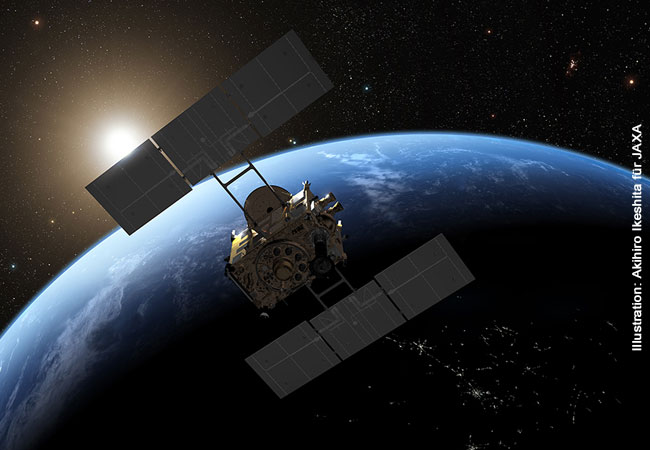On Saturday evening (5/12/2020), a container containing a sample of the asteroid that had been dropped by the Hayabusa 2 space probe landed in the Australian desert. The chemical „fingerprint“ of the water from the asteroid Ryugu could prove that the water on Earth actually originated from asteroid impacts in the early history of the Earth. Up to now, asteroids could only be examined after fragments impacted onto the Earth and therefore contamination by the Earth’s water could not be ruled out. In the coming year, the material sample will be examined by scientists all over the world, including a scientific team from Goethe University.
When it was formed, the young proto-Earth was hot and probably circled around the sun in a very dry zone where water evaporated and was blown into space by the solar wind. According to one theory, our blue planet came to its great oceans through watery celestial bodies that hit the earth. As spectral analyses of comet tails have shown, it was most likely not comets.

This is because in their ice, the ratio of hydrogen with two protons in its nucleus, deuterium (D), to hydrogen with one proton in its nucleus (H) is usually different from that on Earth. On the other hand, the water trapped in certain meteorites – i.e. in fragments of asteroids that have hit the Earth – is almost exactly the same as terrestrial water. Such C-class asteroids are highly carbonaceous and come from the outer part of the asteroid belt that orbits the sun between Mars and Jupiter. Ryugu is one of them.
Prof. Frank Brenker, geoscientist at Goethe University, will examine the Ryugu sample together with his colleague Dr. Beverly Tkalcec. He explains: „There are very good scientific arguments that the D/H ratio we find in meteorites is indeed similar to that of asteroids in space. Nevertheless, we cannot rule out water vapour contamination on Earth: after all, 90 percent of an asteroid evaporates when it passes through the atmosphere, and even if it hits a dry desert, the meteorite can absorb water until it is found, for example from early morning fog. With the Ryugu sample we will finally get certainty on this issue“.
To this end, from the middle of next year, the Frankfurt researchers will examine and screen Ryugu samples for their chemical composition at the particle accelerators ESRF in Grenoble and DESY in Hamburg. Later in the year, Ryugu samples will be cut with the help of a focused ion beam and will be examined with a transmission electron microscope at Goethe University. Tkalcec and Brenker want to determine the exact geological history of the asteroid. In order to be able to assess the measured values for the water, but also the organic compounds that occur, it is immensely important to understand all the processes that led to their formation in the first place. The temperature achieved by the asteroid is just as important here as the circumstances of the formation of water-containing minerals, and the influence of impacts on the surface of the asteroid.
The building blocks for life on Earth may also come from carbon-rich asteroids such as Ryugu, since sugars and components of proteins (amino acids) and the hereditary molecule DNA (nucleobases), which could have been formed from inorganic substances under suitable conditions, have already been found in meteorites. For this reason as well, numerous scientific teams from all over the world will be working on the analysis of the Ryugu samples.









